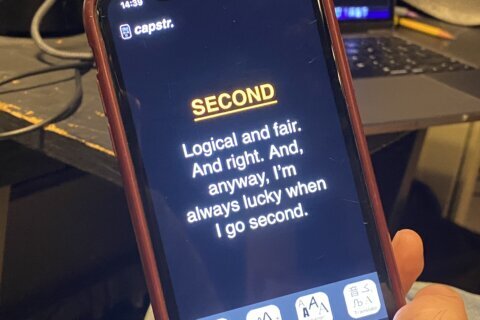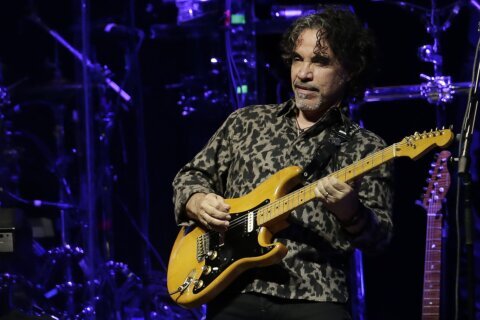He joins Harrison Ford as the only two actors to star in No. 1 box-office smashes in six different decades, but unlike Han Solo and Indiana Jones, the man behind Rocky Balboa also wrote an iconic Best Picture winner.
This Friday, Sylvester Stallone reflects on his career hits and misses in the new Netflix documentary “Sly,” which is riveting for fans of “Rocky,” “Rambo” and “The Expendables” franchises that have made him a global superstar.
Directed by Emmy-winning filmmaker Thom Zinny (“Springsteen on Broadway”), the documentary sets the stage by returning to Sly’s home neighborhood of Hell’s Kitchen, recalling neighbors yelling to each other out of windows. We also learn of his family moving to Silver Spring, Maryland, where he was introduced to horses and playing polo, foreshadowing the Italian Stallion, as well as hints that his father was a tough disciplinarian.
The next phase shows his early struggles in acting, studying drama at the University of Miami and moving back to New York City, breaking into movie theaters to watch films for free and landing bit parts in “M*A*S*H” (1970), “Bananas” (1971) and “Klute” (1971). In an interview, Quentin Tarantino describes seeing Stallone’s role as Stanley in “The Lords of Flatbush” (1974), co-starring Henry Winkler, who recalls helping Stallone move to Los Angeles.
“I found some dump way in the valley one street away from Balboa Blvd.,” Sly says with a twinkle in his eye.
This launches into the best part of the film on the writing “Rocky” (1976), pounding coffee and smoking cigarettes to write it by hand in one weekend. In the first draft, Rocky was just a bum on the fringes, echoing “On the Waterfront” (1954), “Marty” (1955) and “Mean Streets” (1973). He soon turned him into a boxer and fought to play the role himself, turning down offers to sell the script, while Talia Shire discusses her role as Adrian.
Sly even plays audiotapes of old interviews, goading his past self of say that “Rocky” is a love story: “Say it!”
Upon directing the sequels, Stallone’s own life mirrors the franchise. In the first film, Sly was a hungry underdog. By “Rocky II,” Sly needed to prove he wasn’t a one-hit wonder. By “Rocky III,” Sly rides too high, needing to regain the “Eye of the Tiger.” By “Rocky IV,” Sly is larger than life, battling supervillains. The panned fifth film is about Sly neglecting his son before recovering in the sixth film, “Rocky Balboa,” one of his proudest accomplishments.
“Nobody is gonna hit as hard as life. But it ain’t about how hard you hit. It’s about how hard you can get hit and keep moving forward,” Stallone proudly says, quoting his favorite scene from the film and his mantra for life.
Unfortunately, the documentary doesn’t go much into the three “Creed” spinoffs starring Michael B. Jordan, nor does it cover Stallone’s recent battle with producer Irwin Winkler over the rights to “Rocky,” which recently sparked some fiery social media posts and caused Stallone to drop out of appearing in “Creed III” over creative differences. Most fans would agree that Stallone deserves the rights to the characters that he created.
That alone would be enough for a compelling documentary, but there are still two more mega franchises to cover. Sly describes becoming an action star as John Rambo in “First Blood” (1982), a man with post-traumatic stress disorder on the run in the wilderness of the Pacific Northwest. He admits the character was supposed to die, but he demanded to change the ending because he didn’t want to contribute to the very real issue of Vietnam veterans committing suicide.
“I’m in the hope business,” Sly defiantly says. “Shoot me.”
At this point of the documentary, he announces we’ve just watched the rise and we’re about to witness the fall. Arnold Schwarzenegger describes he and Stallone one-upping each other with action stunts throughout the ’80s and ’90s with movies like “Cliffhanger” (1993) and “Demolition Man” (1993), while Stallone writes the names of his flops on a dry-erase board, looking ashamed at some of the titles like “Stop! Or My Mom Will Shoot” (1992).
This segment also sees Tarantino vouch for Sly’s more serious role in James Mangold’s “Cop Land” (1997) as Sly expresses pride at a particular scene with Robert De Niro. This transitions into the 21s century as Stallone invents the idea of bringing all of the old action-movie legends back together in “The Expendables” (2010), in which he admits that he pushed himself too hard doing his own stunts and suffered serious injuries that still plague him.
Through it all, Sly keeps coming back to the theme of time. He describes memories of his life as images whizzing by like scenes out the window of a train car. He also says that your first 40 years are addition (chasing dreams, getting married, having kids), while your last 40 years are subtraction (your kids moving out, your body failing and people you love dying, leaving you alone in an empty house). “Do I have regrets? Hell yeah I have regrets,” he says.
Perhaps the saddest part of the documentary comes as he shows a scene from the movie masterpiece “The Lion in Winter” (1968) where the aging king (Peter O’Toole) disowns his son (Anthony Hopkins). This is juxtaposed with cellphone footage of him visiting his dad on his deathbed, urging him to learn to forgive people.
The ending is quite touching, describing the last shot of Rambo sitting alone on the porch in his rocking chair, not wanting to show him dying on screen, but rather giving audiences the ambiguous impression that he’s still alive out there somewhere. Thus, the documentary filmmaker ends with Stallone standing alone in his mansion.
“I still believe that we don’t see our heroes die before our eyes,” he says.









